Main Menu

Erkennungsmarke (Identity Disc)
The Erkennungsmarke (Identity Disc) had a long history in the German Army; being first adopted during the 1870-71 war between Prussia and France. One gentleman with many sons serving in the Army noted that since dogs in the city of Berlin were tagged, it would be a good idea to do the same for soldiers. Wilhelm I did not like the idea of his men being compared to dogs, but he adopted the system anyway. By 1914, the Erkennungsmarke was oval shaped and made of Zinc. It had a multitude of information on it to identify the wearer.
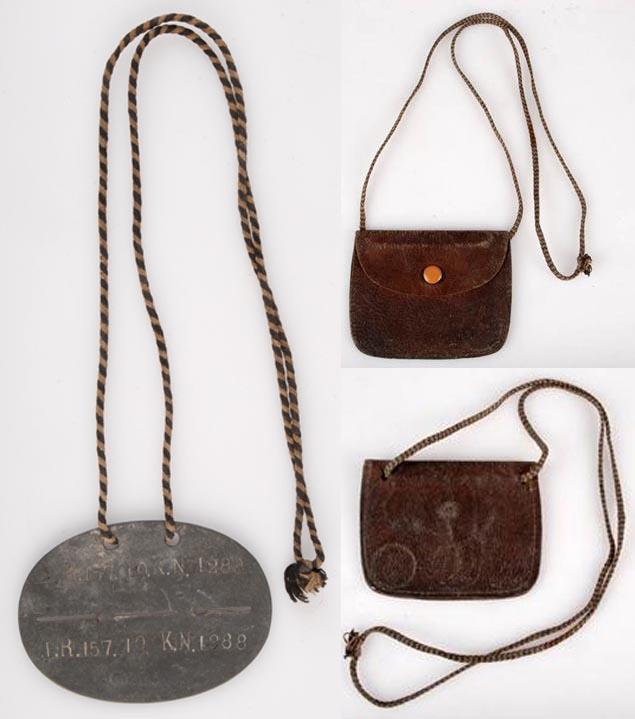
Original Erkennungsmarke with black/white Prussian neck cord
and original leather Brustbeutel
Each member should wear the disc suspended by a twisted black and white cord, or in the Brustbeutel, a leather bag with a neck cord. Veterans have indicated that an alternate method that was used was to attach the Erkennungsmarke to the trouser's suspenders. The unit issues this item to new members.
First Pattern
There were three main patterns of identity disks issued during the war. The earliest type is a single oval disk measuring 2" x 1½" that contained the wearer's unit, company, and his individual number within his company.
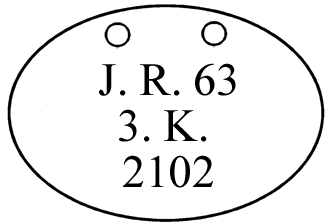
1914 Pattern Identity Disk (Second pattern)
The second pattern of identity disk was introduced in September of 1915. It was also oval and measured 2¾" x 2".

When the Soldat joins a depot unit, the following information would be stamped to the upper portion of the disk:
- Christian name and surname
- Last residence (in large towns, the street and number is added)
- Date of birth
- Depot unit
- Company, squadron or battery (at the depot)
- Regimental number (at the depot)
Once the soldier was drafted to a unit in the field, the following information would be added to the lower portion of the tag:
- Unit
- Company, squadron or battery
- Regimental number (in his company)
The depot unit information would not be struck out.
When a Soldat is transferred from one unit in the field to another, the markings of the old unit would be struck out and the new unit information added.
1915 Pattern Identity Disk (Third Pattern)
In November of 1916, the third pattern of identity disk was introduced. This pattern was similar to the second pattern in size and shape, but the addition of perforated line across the center divided the disk into an upper and lower portion. The same information found on the second pattern was also entered on the new pattern, on both the upper and lower portions, and when space was needed, on the back in both the upper and lower portions. When a Soldat was killed, the two halves (bearing the identical information) were broken in half. One half remained with the Soldat while the second was sent back to headquarters.
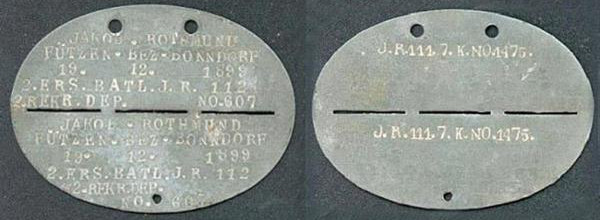
Original Erkennungsmarke of Infanterieregiment Nr. 111.
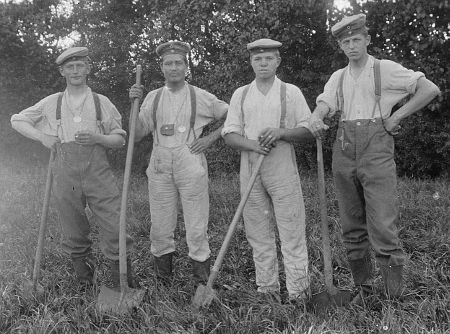
Original photo of a group of young Soldaten in shirtsleeves, the two at left with Erkennungsmarke
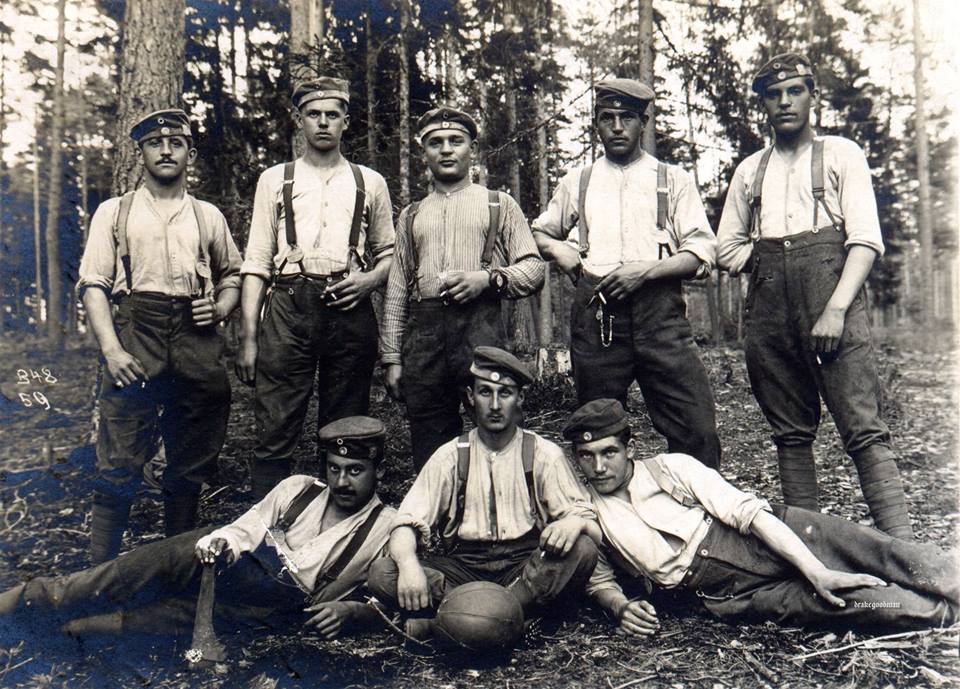
Original photo of another group of young Soldaten in shirtsleeves, several sporting their Erkennungsmarke attached in an alternate method to their suspenders.
References
Handbook of the German Army 1918, The Imperial War Museum and The Battery Press, Inc., 1996, p. 153-154.